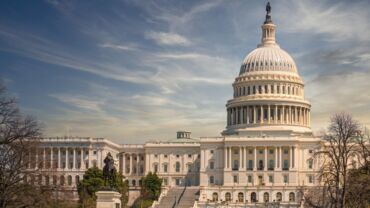At the Thomson Reuters Foundation's flagship Trust Conference, holding corporations and financial institutions accountable for their promises on the environment and social change was a hot topic
At the recently concluded United Nations Climate Conference in Glasgow (COP26), thousands of politicians and business leaders pledged to reduce their collective carbon emissions, protect the world’s forests, quit their addiction to coal, invest in clean energy, and plant a lot of trees.
But how?
All of these promises have been made before — in the Kyoto Protocol and Paris Agreement, for example — and very few of those promises have been kept.
Addressing accountability
At this year’s annual Trust Conference, the flagship event of the Thomson Reuters Foundation, a number of sessions attempted to address environmental and social accountability in the corporate and financial sectors, including how a climate-friendly restructuring of corporate incentives might actually be achieved. In a session titled Achieving Net Zero: The World’s Next Moonshot?, for example, a panel of experts discussed the magnitude of the net zero challenge, including crafting more effective ways to channel capital and regulate consumption.
Net zero, it should be said, is a much larger ambition than carbon neutrality. Net zero refers to all greenhouse gases, not just carbon dioxide, and is achieved when a company’s greenhouse gas emissions are equivalent to the level of gases it is removing from the atmosphere. Reaching net zero globally by 2050 is the moonshot goal, and it is still a far cry from actually reducing human-created greenhouse gas emissions.
According to panelist Travis Antoniono, an investment manager in climate strategy for the $500 billion California Public Employees’ Retirement System (CalPERS) fund, the scale of the net zero challenge cannot be overstated. Although “structural change can take place through investment,” Antoniono says, “the larger you are, the more diversified you are, the more global you are, the harder it is to pull the levers to dramatically decrease emissions overnight.”
Over the course of the next decade, however, it should be “relatively easy” for a diversified portfolio of sustainable investments to reduce its emissions profile by 50%, he says, adding that “the next 50% will be harder. And in order to move at scale and speed, which are sometimes contradictory, you’re going to need policy intervention.” And that means starting with laws that put a price on carbon in order to change consumer behavior, he notes.
Clean corporations
Even without concrete legal requirements, public awareness has already motivated consumers and investors to consider how companies are managing their carbon footprint, which is why some of the largest ones — such as Amazon and MasterCard — are trying to get in front of the problem by creating departments and programs dedicated to various forms of sustainability. For example, panelist Adrian Cockcroft, VP of Amazon Sustainability Architecture, says the company has set a goal of achieving net zero emissions by 2040, and has pledged to run its operations on 100% clean energy by 2025.
Amazon wants to lead by example, Cockcroft explains. “If we can get participation by more and more large industrial companies, we can get emissions down earlier.” Amazon is also encouraging its enormous network of suppliers to decarbonize, he says, and has ordered 100,000 electric vehicles from the EV maker Rivian as a step toward electrifying its entire fleet of delivery vehicles.
Keeping them honest with data
For many companies and countries, however, making a climate pledge is the easy part; holding them accountable for their promises is much harder. Panelist Ma Jun is Director of the Institute of Public & Environmental Affairs for the Wilson Center, a Chinese NGO dedicated to transparency regarding China’s commitment to become a carbon-neutral country by 2060.
Data is Jun’s secret weapon. He developed the China Water Pollution Map, the first public database for water pollution information in China, as well as the Blue Map app, which is designed to help governments, companies, and the public track efforts to reduce plastic in the industrial and food ecosystems. “In China, we want to promote transparency of environmental data” for the purposes monitoring emissions and holding major emitters accountable, as well as “helping people visualize their progress through the data, and to hold everyone accountable,” Jun says.
All of which is sounds good, but according to another panelist — Yvonne Aki-Sawyerr, mayor of Freetown, the capital of Sierra Leone — the climate pledges and promises of rich countries won’t mean much unless money is invested in the energy resources necessary for poorer countries to adapt as well. “The energy deficit is so stark that there needs to be acceptance of it and financing to decrease the scale of inequality,” Aki-Sawyerr insists, adding that part of the problem is that “the investments we need to adapt require money, but it’s not the sort of investment that gives a good return.”
Committing to ESG
A similar issue faces those who are trying to apply the principles of environmental, social, and corporate governance (ESG) to corporate enterprises — indeed, many corporate leaders are still skeptical of the claim that ESG principles are not only good for society but are also good for business.
In the ESG movement, MasterCard is one major company that has made its commitment to ESG principles public. “Our purpose in doing it is to build an inclusive society — to build a place where doing well and doing good are not mutually exclusive,” says Shamina Singh, MasterCard’s VP of Sustainability.
However, ESG principles still need legal teeth behind them in order to be effective, says Jacquelyn MacLennan, a partner at the law firm White & Case. Fortunately, “ESG is going mainstream and becoming a legal responsibility for companies,” she notes. In fact, the pace of regulatory change is accelerating quickly, particularly when it comes to human rights abuses and child labor, MacLennan says. “Companies have been required to look at their supply chains, and the US now has import bans on products made with child labor.”
Due diligence requirements involving human rights and forced labor are also gaining momentum, she notes, and the EU now has a mandatory law enforcing due diligence in the areas of environmental and human rights.
Data and diversity
In a session called Leveraging ESG Momentum for Social Good, which focused on the S or Social part of the ESG movement, panelists discussed how to adopt and measure such important S-factors as human rights, worker rights, socio-economic inequality, pay equity, and more diverse hiring practices.
At Engine No. 1, an ESG-focused investment group, managing director Yusef George has been involved in creating a corporate racial equity tracker, which monitors data on pay equity, workforce diversity, and whether US companies are hiring a diverse range of suppliers. “The data helps NGOs and investors assess how the 100 largest employers in America are walking the talk,” says George. “Data transparency also allows us to find gaps and use that information to discuss with companies how they are tying their strategic business decisions to their community.”
None of this is easy, of course. Meaningful movement on these issues will require rapid, widespread changes in policy and investment across many sectors of society, as well as participation, commitments, and cooperation by governments, industries, and individuals all over the world.
Even if it is technically feasible to achieve net zero emissions and universal social equity by 2050, whether it is politically, socially, and economically feasible is another question entirely.







